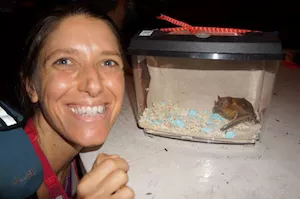
Kinship, association, and social complexity in bats
With more than 1,400 species worldwide, bats are the second most speciose group of mammals and most live in groups. In fact, bats exhibit the gamut of sociality, ranging from living solitarily, to living in leks, harems, and colonies of more than a million individuals. Network analyses have provided us with a better picture of the factors shaping composition and stability of bat groups. However, the precise metrics used vary considerably across studies, making comparisons across species difficult. Moreover, the role kinship plays in these groups has not been well documented. Drawing from published and unpublished data on social and genetic relationships, we applied the same social and genetic analyses to 9 species from 4 families of bats. We found that bats moving among roosts (shelters) and, in turn, groups, have more differentiated relationships compared to bats that rarely move and live in stable groups. Within more dynamic groups, individuals are more likely to form stronger associations with close relatives. In more stable groups, social relationships and interactions are not predicted by relatedness.
Congratulations to Krista Patriquin!
